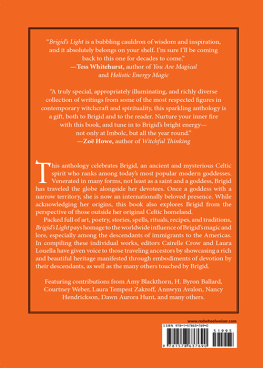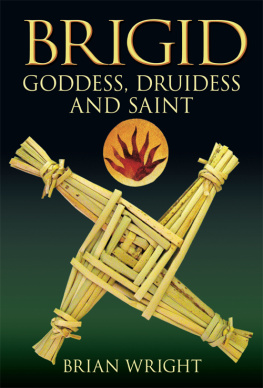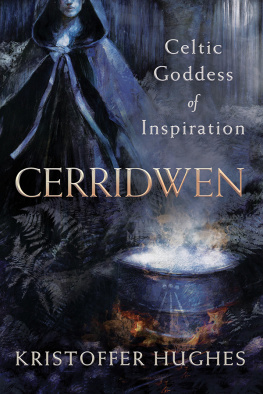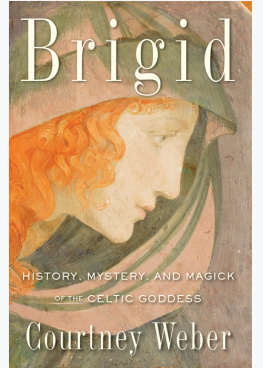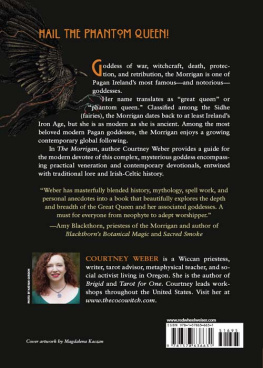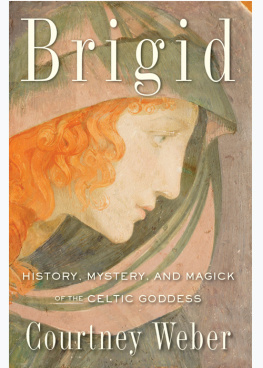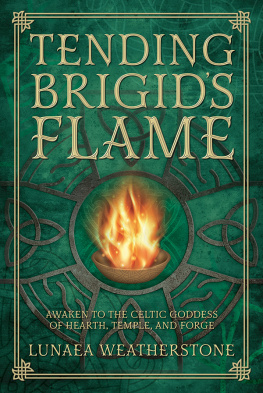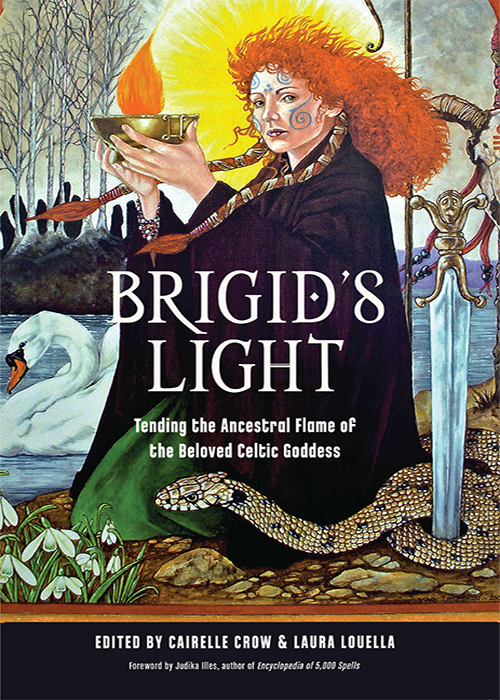
PRAISE FOR BRIGID'S LIGHT
This is the book all Brigid devotees and enthusiasts have been dreaming about. Brigid's Light is a bubbling cauldron of wisdom and inspiration, and it absolutely belongs on your shelf. I'm sure I'll be coming back to this one for decades to come.
Tess Whitehurst, author of You Are Magical and Holistic Energy Magic
Introducing us to the beloved goddess, Brigid, in her different guises, Brigid's Light is a truly special, appropriately illuminating, and richly diverse collection of writings from some of the most respected figures in contemporary witchcraft and spirituality. Trusted handsincluding those of Judika Illes and Byron Ballardshine a light on the many facets of this ever-inspirational Celtic deity, guiding us into her realm through the medium of spells, poetry, recipes, crafting, personal reflections, rituals, and much more besides. This sparkling anthology is a gift, both to Brigid and to the reader. Nurture your inner fire with this book, and tune in to Brigid's bright energy, not only at Imbolc, but all the year round.
Zo Howe, author of Witchful Thinking
Brigid was the first goddess that had a direct impact on how my life unfolded. I can also see her light and her hand at work throughout the world in many individuals and communities today. Brigid's Light is more than an excellent anthology; it is an act of healing and the creation of a community of practice. Divine beings are vast and beyond the comprehension of any single human being. However, when you bring together the thoughts, experiences, and insight of many people such as is present in this book, you begin to get a glimmer of Brigid's majesty and her nature. If you are called by her, you will find both confirmation and challenges in this book, and that is her way.
Ivo Dominguez Jr. author of The Four Elements of the Wise
This edition first published in 2022 by Weiser Books, an imprint of
Red Wheel/Weiser, LLC
With offices at:
65 Parker Street, Suite 7
Newburyport, MA 01950
www.redwheelweiser.com
www.redwheelweiser.com/newsletter
Copyright 2022 by Cairelle Crow and Laura Louella
All rights reserved. No part of this publication may be reproduced or transmitted in any form or by any means, electronic or mechanical, including photocopying, recording, or by any information storage and retrieval system, without permission in writing from Red Wheel/Weiser, LLC. Reviewers may quote brief passages.
ISBN: 978-1-57863-769-0
Library of Congress Cataloging-in-Publication Data available upon request.
Cover design by Kathryn Sky-Peck
Cover art Brighde, 2000 Stuart Littlejohn
Interior by Deborah Dutton
Typeset in Adobe Garamond Pro, Frutiger LT Std, Chalet Comprime and Morpheus
Printed in the United States of America
IBI
10 9 8 7 6 5 4 3 2 1
DEDICATION
To Brigid, goddess, saint, and traveling companion, and to the memory of the ancestors who crossed oceans and continents, carrying her with them.
Contents
Foreword
Welcome to Brigid's Light, an anthology dedicated to Brigid, a multifaceted sacred being whose forms include an extremely beloved goddess and saint. The earliest documentation of Brigid is in Ireland. She appears in the Book of Invasions, a mythic history of Ireland that was formalized in the 11th and 12th centuries, but was drawn from much earlier oral and written sources. Archaeological and etymological evidence indicates that her presence was once widespread throughout the British Isles and likely to have been quite ancient.
Brigid is a goddess of artisanry, poetry, smithcraft, healing, fertility, midwifery, prosperity, and protection. Her name is typically interpreted as referencing fire; her mythos includes unusual, sacred flames, sometimes emanating from her own head or body. But Brigid is a water goddess as well, associated with numerous holy wells and springs throughout the British Isles.
Brigid is a complex goddess, simultaneously ancient and modern. The Book of Invasions credits her with inventing the art of keeningvocalized lamenting of the dead that expresses the rawest, most primal grief. While not a spirit of death, Brigid is the goddess of mourners and mourning. As a goddess of craftsmanship, she is also associated with modern technology, as well as with traditional crafts.
Irish mythology identifies Brigid as a member of the Tuatha D Danann, the spirits who would evolve into the Sidhe or Sheethe Irish fairies or fae. Following Ireland's conversion to Christianity, most female members of this pantheon were, at best, demoted to fairy queens. Brigid is the exception. She was able to make the transition to Christianity and retained her reputation as a benevolent holy being, albeit in a different form.
Brigid is a shapeshifter. As a goddess, she takes many forms: as a woman of various ages from girl to crone, as a serpent, as a pillar of fire, and as a woman with flames emanating from her head. Sometimes she appears as a single being, but she may also take the form of a triplicity, or as three sisters. Brigid seems able to take on the spiritual characteristics most needed and most accessible to her devotees.
Depending on interpretation and personal belief, Brigid of Kildare may or may not be the goddess in the guise of a Christian saint. Some believe that the goddess evolved into the saint or accepted the mask of the saint, perhaps to remain close to her devotees. With the banishing of Paganism, most Irish deities were suppressed, forgotten, or demonized. Brigid, however, transitioned to sainthood.
Others, however, believe that Saint Brigid is not the goddess in disguise, but an actual, historical woman, perhaps the last priestess of the goddess who, having converted to Christianity, was able to integrate her beliefs in a way that remained true to her past and present. Some theorize that, as part of their ritual practice, Brigid's priestesses adopted her name, hence the shared name of saint and goddess. Even today, as you will see in these pages, modern practitioners adopt Brigid's name in order to honor her, but also to establish their spiritual connections with her and perhaps to allow her power and holiness to radiate through them.
Brigid the goddess and Brigid the saint share more than their names, however. Their feast days, constituencies, interests, and iconology are close to identical. Beyond the identity of the saint as a Christian and the identity of her precursor as Pagan, the boundaries between the two can be nebulous. Legends of the saint have crept into the goddess's mythology and vice versa. Saint Brigid has dominion over domestic animals like pigs and cows. Many of her legends reference the preparation of food and beer, often produced in a miraculous fashion, and always preternaturally delicious.
Brigid may also manifest in other sacred guises. In the 18th century, she appears to have accompanied the Irish Brigade to what is now Haiti, where she may have jumped ship and evolved into the Vodou spirit (lwa) Maman Brigitte or Madame Brigitte, although this is currently controversial and fiercely debated.
Brigid's impact continues to resonate. Her influence has consistently increased through the ages, rather than the reverse. Brigid accompanied her Celtic devotees as they traveled around the globe, and she is now loved by people worldwide and not only by those of Celtic origin. Her constituency has broadened and diversified exponentially and continues to do so.
Next page
